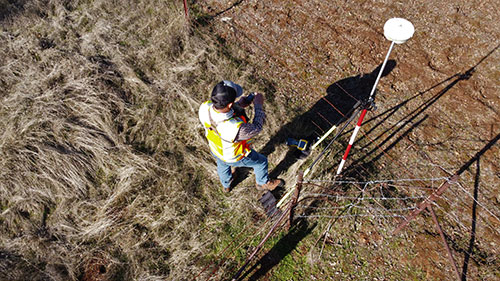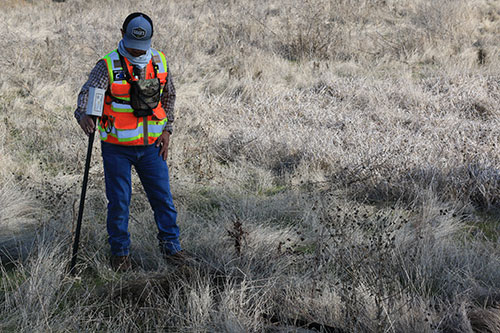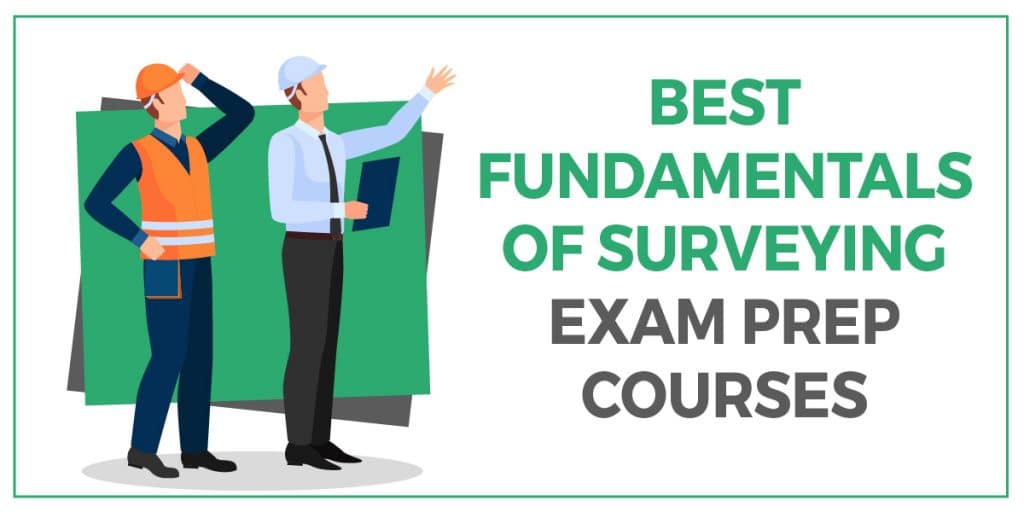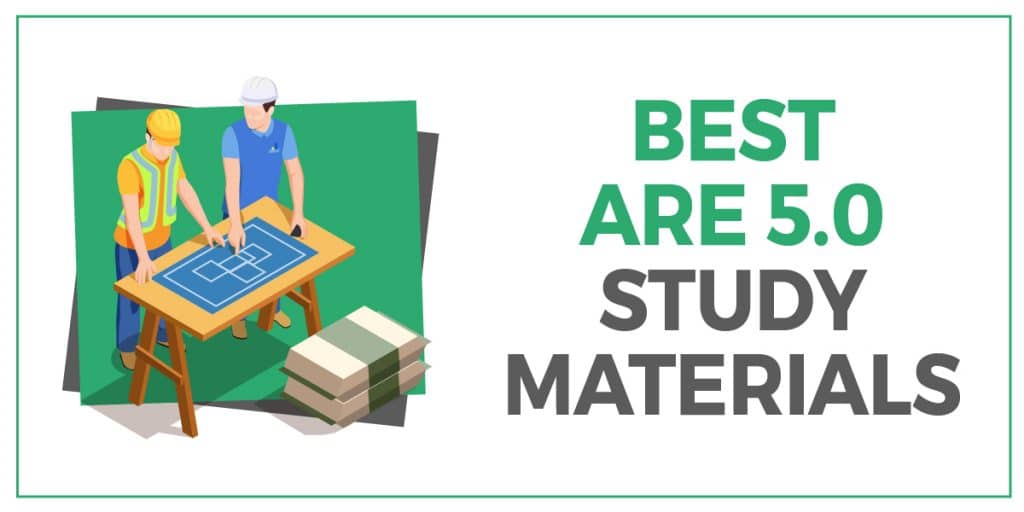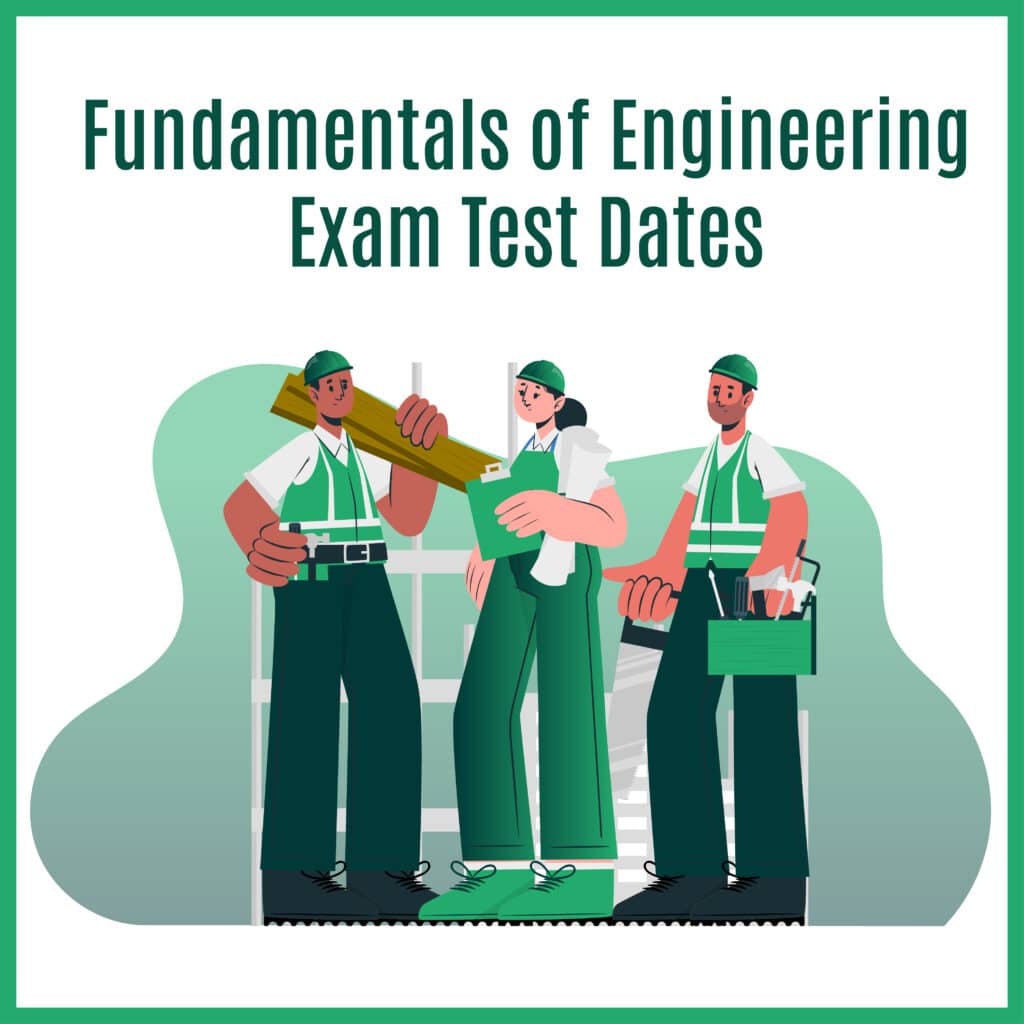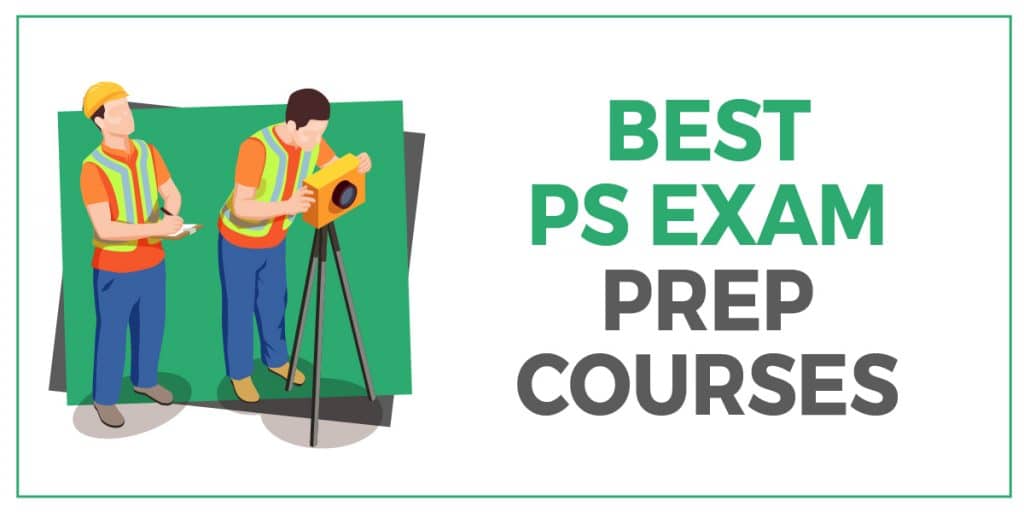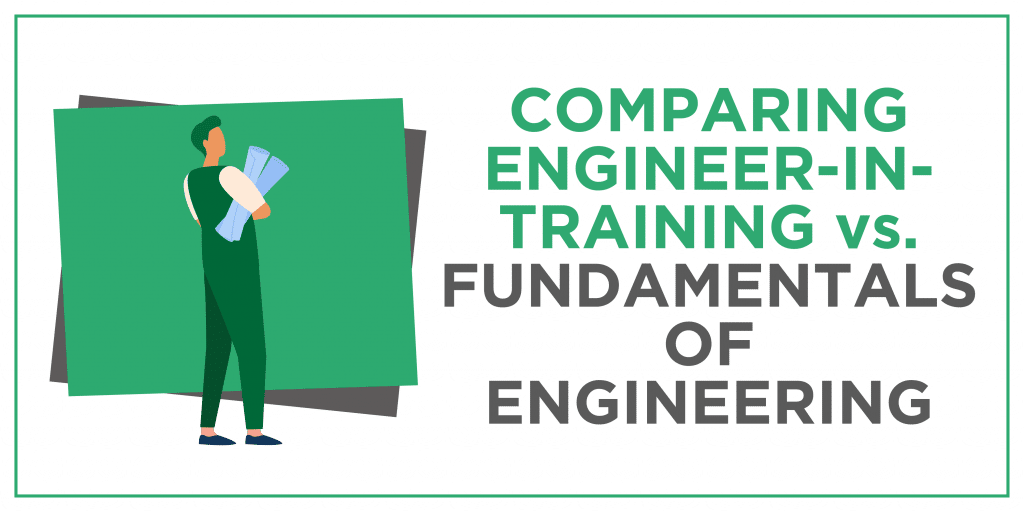Land surveyors have an important job in the field of engineering. They gather data for construction projects by measuring and mapping the shape of the land before any new structures are designed for the area. Infrastructure is made safer thanks to the effort of land surveyors, so it’s an excellent career path if you’re interested in helping others.
Naturally, becoming a land surveyor can be a difficult task; you need to meet state specific education requirements and pass a certification test. But once you’ve done so, you’ll officially be a Land Surveyor in Training (LSIT), which lets you start acquiring work experience.
So if you want to get started as an LSIT, there are certain things you need to know:
LSIT Exam vs FS vs PS: Choosing the Right Certificate
One confusing aspect of becoming a professional land surveyor is choosing the right certificate. The LSIT is an important one, but it’s regularly used interchangeably with the NCEES Fundamentals of Surveying (FS) and Professional Surveyor (PS) licenses. The three of them are slightly similar but have a few key differences.
The FS and LSIT are extremely similar— in fact, they’re practically the same thing. Both programs prove you have the required knowledge and aptitude to practice land surveying, and are ready to gain the necessary experience.
Here’s the key difference:
LSIT is a national certificate and FS is state specific. Put simply, you need to apply for a new FS every time you relocate. Additionally, some states like Tennessee require you to have an FS to earn an LSIT. For these reasons, it’s a good idea for you to focus on LSIT first and FS second if you’re interested in getting both.
What certifications or qualifications do you need to be a surveyor?
Earning a PS certificate requires you to have an LSIT and/or an FS. A PS license essentially shows that you’re more qualified and competent than an LSIT. Naturally, this means you can access better job opportunities and more important projects.
If your goal is to become a professional land surveyor, you want to earn a PS application later in your career. In addition to better pay, your work as a PS will impact the public far more than that of an LSIT!
Can I become a surveyor without a degree?
Land surveyor education courses and requirements vary by state, but there are some common trends. You’re typically required to have a Bachelor’s degree in a survey related field; most states require you to have a 4-year degree, but some of them let you apply with a 3-year degree if you have enough work experience. Tennessee will allow you to take the test with only a high school diploma, but only if you have 10 years of work experience.
Again, certain states will require you to pass the FS exam before earning an LSIT license. If your state requires an FS certificate, I’d recommend preparing for the test ahead of time; it’s harder than the LSIT exam, so you’ll want to use a good FS exam prep course. We recommend School of PE’s land surveyor courses, but there are other excellent options out there as well.
Finally, many states require you to have experience in a survey related field. How much experience you need is based on how far you’ve gone in terms of education. Most states have a baseline of 2 years, but that number can go up or down depending on what degree you have.
Step by Step on How to Become a Land Surveyor in Training
The journey to becoming a Land Surveyor in Training (LSIT) is a meticulous and rewarding process. It requires a blend of formal education, examination, and eventual certification. Here’s a comprehensive breakdown of the steps involved:
Educational Pathways
1. Acquiring Formal Education: The foundational step in becoming an LSIT is to gain the necessary educational background. This typically involves earning a Bachelor’s degree in a relevant discipline such as surveying, geomatics, civil engineering, or a closely related field. The importance of selecting an ABET-accredited program cannot be overstated, as these programs adhere to the rigorous standards that will prepare you for licensure and professional practice.
Notable Colleges and Universities Offering Surveying Programs
- Oregon Institute of Technology: Known for its Bachelor of Science in Geomatics program, which equips students with practical skills in surveying technology and geospatial analysis.
- Pennsylvania State University: Their Bachelor of Science in Surveying Engineering program is renowned for its comprehensive curriculum that covers a wide range of surveying topics.
- Texas A&M University-Corpus Christi: Offers a robust Bachelor of Science in Geomatics program that emphasizes the integration of high-tech equipment and software in surveying.
2. Enhancing Skills with Online Courses: In today’s digital age, the opportunity for learning extends beyond the traditional classroom. For aspiring land surveyors who may not have the means or opportunity to enroll in a full-time university program, online learning platforms provide a wealth of knowledge.
Recommended Online Learning Resources
- Coursera: Features a variety of courses related to surveying principles, including the use of industry-standard surveying software, taught by experienced professionals and university instructors.
- Udemy: Offers practical, project-based courses that can help you understand the nuances of land surveying and geomatics, often with a focus on real-world application.
By following these educational pathways, you are laying a solid foundation for your career as a land surveyor. Whether through a traditional college education or supplemented by online courses, the knowledge and skills you acquire will be instrumental in your journey to becoming an LSIT.
Certification Process
Step-by-Step Guide to Obtaining LSIT Certification
The LSIT certification is obtained by passing the Fundamentals of Surveying (FS) exam, administered by the National Council of Examiners for Engineering and Surveying (NCEES). Here’s how to go about it:
- Complete the required education or combination of education and work experience as specified by your state’s licensing board.
- Register for the FS exam with the NCEES. This involves creating an account, applying for approval, and scheduling the exam.
- Upon passing the FS exam, apply for the LSIT certification through your state licensing board.
Differences Between LSIT, FS, and PS Certifications and How They Interrelate
The LSIT is the initial certification indicating that an individual has passed the FS exam and is on the path to becoming a licensed surveyor. The FS exam is the first step, focusing on basic knowledge and skills. After gaining sufficient experience, an LSIT can take the Principles and Practice of Surveying (PS) exam to become a fully licensed Professional Surveyor (PS).
State-Specific Certification Requirements and How to Navigate Them
Each state has its own requirements for certification. For example, California requires applicants to have at least two years of land surveying experience in addition to passing the FS exam. It’s essential to consult the licensing board of the state where you plan to practice for specific requirements.
Exam Preparation
In-depth Study Strategies for the LSIT Exam
Preparing for the LSIT exam requires a strategic approach:
- Familiarize yourself with the exam format and content by reviewing the NCEES FS exam specifications.
- Develop a study schedule that covers all the topics and allows for review and practice exams.
- Join study groups or forums, such as the Land Surveyor United Community, for support and resources.
Tips for Managing Exam Stress and Time During the Test
To manage stress:
- Practice relaxation techniques and maintain a healthy lifestyle leading up to the exam.
- During the exam, use time management strategies, such as answering questions you know first and allocating time proportionally to the weight of the question.
- Remember to take short breaks to clear your mind, if allowed.
By following these steps, you can navigate the educational and certification requirements to become an LSIT and lay the groundwork for a successful career in land surveying.
Gaining Practical Experience
After successfully passing the LSIT exam, the next step is to accumulate practical experience in the field. This experience is vital for several reasons:
- Application of Theoretical Knowledge: Practical experience allows you to apply the theoretical knowledge gained during your studies to real-world surveying tasks.
- Skill Development: On-the-job experience is crucial for developing the technical and problem-solving skills required for a successful surveying career.
- Professional Networking: Working in the field provides opportunities to build professional relationships that can be beneficial for career advancement.
Path to Professional Land Surveyor (PLS) Licensure
The journey from LSIT to PLS is marked by several key milestones:
- Professional Experience: Most states require a certain number of years of professional experience under the supervision of a licensed surveyor. This period is essential for honing your skills and understanding the nuances of the profession.
- Advanced Certification: After gaining the required experience, you can sit for the Principles and Practice of Surveying (PS) exam, which is the next step in becoming a PLS.
- Continuing Education: Many states require ongoing education to maintain licensure. This commitment to learning ensures that surveyors stay up-to-date with the latest technologies and regulations in the field.
Continued Professional Development
The field of land surveying is constantly evolving with new technologies and methodologies. As such, professional development is a lifelong process. Here are some ways to stay at the forefront of the profession:
- Attend Workshops and Seminars: These events are great opportunities to learn about the latest trends and tools in surveying.
- Subscribe to Industry Publications: Keeping up with journals and magazines can provide insights into best practices and case studies.
- Engage with Professional Organizations: Groups like the National Society of Professional Surveyors offer resources and advocacy for surveyors at all stages of their careers.
By following these steps and committing to continuous learning and professional growth, you can ensure a fulfilling and successful career in land surveying. Remember, the journey from education to licensure is not just about passing exams but about building a foundation of knowledge and experience that will support your career for years to come.
LSIT Careers
As an LSIT, you’ll be able to find entry level work as a land surveyor. Here’s a quick rundown of the work that comes with this job title:
According to the U.S. Bureau of Labor Statistics, your job duties will include measuring property lines and gathering data about the shape of the earth in the area. You’ll also need to determine the exact location of any important land features in their work area and research land records for any relevant information. Ultimately, all this information is presented to any clients or government entities you work for; the info is used to help engineering, construction, and map making projects
Is land surveying a dying profession?
Job growth for land surveyors is expected to be slower than the average, with the BLS expecting 2 percent job growth in the next 10 years. The most likely cause of this slow growth is an increase in the use of surveying technology, such as drones.
Although the work will become safer, this means you’ll need to be prepared to enter a competitive industry. So you’ll want to have both an LSIT and a college degree (as well as continuing education) for a good chance at employment as a land surveyor— any less and you might miss out on clients who choose your competition instead!
Do surveyors make good money?
According to Payscale, anyone with an LSIT certification can expect to make $22.06 an hour, which comes out to almost $60,000 a year. Once again, that work will most likely be as a land surveyor, although you can also make similar money as a survey technician or survey party chief.
As you can see, this is a fairly lucrative career if you’re willing to put in the work to earn your position. Just keep in mind that competition will be fierce due to slow job growth and technological developments.
Fortunately, there’s a way to ensure you stay competitive:
Online LSIT Exam Prep Guides
If you’re interested in professional land surveying, your first step is the LSIT exam. You need to pass it in order to earn your certificate and start acquiring on-the-job experience.
There are plenty of online LSIT study materials, but they can vary in cost and quality. To help you get started the right way, check out this list of free resources first:
- Land Surveyors United is a global social education community for land surveyors. Their site has plenty of free study materials like video lessons and articles written by working professionals. Studying these will help you understand how to apply concepts to a professional setting.
- Finally, you’ll also want to take a look at the National Society of Professional Surveyors practice exams. Each test focuses heavily on trigonometry, which is essential for your work as a land surveyor. Completing these will ensure that you’re capable of handling the math requirements for this career.
After you’re done with these resources, you’ll be in good shape when it comes to exam prep. However, you should also consider continuing education courses— especially ones that can prepare you for the FS exam, like School of PE. After all, many of the same concepts can be found on both tests, so you can essentially prepare for both at the same time!
Wrapping Up
LSIT is an excellent certificate for anyone willing to put in the work. It can be difficult to get your foot in the door— but once you start land surveying, the pay is great and the work is secure.
If you’ve got strong math and science skills and want to make a difference in an urban or residential community, then the only thing left to do is get started!
FAQs
The LSIT certification is a professional credential that signifies the holder has passed the Fundamentals of Surveying (FS) exam and is on the path to becoming a licensed land surveyor.
Most states require a Bachelor’s degree in surveying, geomatics, civil engineering, or a related field to become an LSIT. However, some states may allow a combination of education and work experience.
You can search for ABET-accredited programs in surveying or related fields on the ABET website, which ensures the program meets the standards required for licensure.
Key subjects include mathematics, particularly geometry and trigonometry, statistics, physics, law, and various surveying methods and technologies.
Registration for the FS exam is done through the National Council of Examiners for Engineering and Surveying (NCEES) website, where you’ll create an account and apply for approval to take the exam.
An LSIT is the initial certification after passing the FS exam, while a PS is a fully licensed surveyor who has passed the Principles and Practice of Surveying (PS) exam and met additional experience requirements.
While continuing education is generally not required for LSITs, it is crucial for those who wish to become a PS, as most states require continuing education to maintain licensure.
The time varies by state but typically requires 4 years of professional experience under the supervision of a licensed surveyor after obtaining the LSIT certification.


